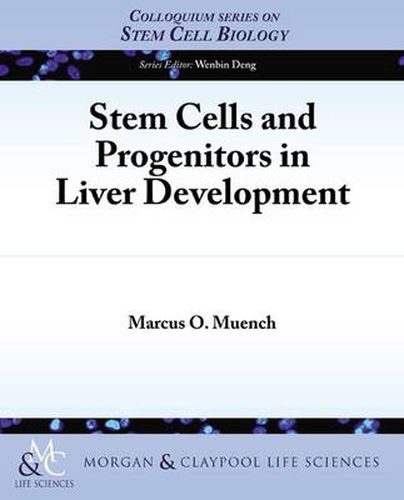Readings Newsletter
Become a Readings Member to make your shopping experience even easier.
Sign in or sign up for free!
You’re not far away from qualifying for FREE standard shipping within Australia
You’ve qualified for FREE standard shipping within Australia
The cart is loading…






The human liver is a dynamic organ throughout life, but no more so than during prenatal development. The liver performs many essential functions associated with metabolism, immunity and blood production. These diverse functions are performed by a variety of cell types that have the capacity for growth, allowing the liver to regenerate cells lost due to aging, infection or injury. Various stem cell populations are at the core of the liver’s potential for regeneration, which are most active during embryonic and fetal development, when the liver undergoes rapid growth. Consequently, the prenatal liver represents a unique opportunity to study the precursor cells that give rise to all liver cells at their time of greatest activity. Herein, we focus on the early development of the human liver from the perspective of the stem cells and their many lines of progeny that generate the hepatic, endothelial, mesenchymal and hematopoietic cells that comprise the fetal liver. Understanding the developmental relationships, growth control and cellular interactions among these cells is crucial to our understanding of liver development and function during prenatal life. This knowledge also provides insight into the development of cellular therapies, transplantation and the treatment of cancers.
$9.00 standard shipping within Australia
FREE standard shipping within Australia for orders over $100.00
Express & International shipping calculated at checkout
Stock availability can be subject to change without notice. We recommend calling the shop or contacting our online team to check availability of low stock items. Please see our Shopping Online page for more details.
The human liver is a dynamic organ throughout life, but no more so than during prenatal development. The liver performs many essential functions associated with metabolism, immunity and blood production. These diverse functions are performed by a variety of cell types that have the capacity for growth, allowing the liver to regenerate cells lost due to aging, infection or injury. Various stem cell populations are at the core of the liver’s potential for regeneration, which are most active during embryonic and fetal development, when the liver undergoes rapid growth. Consequently, the prenatal liver represents a unique opportunity to study the precursor cells that give rise to all liver cells at their time of greatest activity. Herein, we focus on the early development of the human liver from the perspective of the stem cells and their many lines of progeny that generate the hepatic, endothelial, mesenchymal and hematopoietic cells that comprise the fetal liver. Understanding the developmental relationships, growth control and cellular interactions among these cells is crucial to our understanding of liver development and function during prenatal life. This knowledge also provides insight into the development of cellular therapies, transplantation and the treatment of cancers.